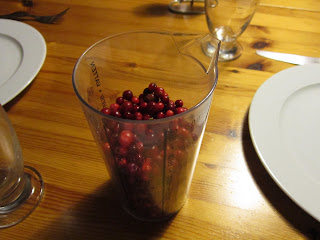There was already a raised bed built from old railway sleepers in the garden when we moved into this house last November. Deep and square it seemed ideal for growing a few vegetables suited to a small space; spring onions, radishes, salad leaves and so on. The apple tree at the back of the bed had been planted in a rather wonky way (not by me!) but at least that meant it would lean over the patio rather than the soil and wouldn't cast too much shade.
In spring I sowed some rows of seed, marked them with sticks and waited for shoots to appear. After the initial promise of good weather early in the year things went downhill and my continuing efforts to grow annual crops in the raised bed never seemed to come to much. Most seedlings were eaten by slugs. The ones that did grow got stretched by the late afternoon shade and they were soon overtaken by weeds as the rainy days of summer turned into rainy weeks and months.

So, as of a couple of weeks ago I was faced with a bed looking as it does in the picture above. The bindweed had engulfed everything and I had no choice but to clear it all out and start again. I pulled up most of the plants and dug through the soil several times to remove as many of the bindweed roots as possible. I left in the Hemerocallis plants either side of the apple tree, as well as the oregano, chicory, salad burnet and bronze bugle. Although generally I am a no-dig gardener (perhaps rather obsessively since attending an inspirational workshop at Charles Dowding's place last year), perennial weeds have to be an exception, especially bindweed, as I refuse to resort to chemical means of control. This inevitably means that there will be some bindweed roots left behind (it's almost impossible to get all of it out), but I have resolved to be vigilant and pull up any shoots as they appear, in the hope that this will keep things under control and eventually weaken the roots.

I have a rather utilitarian approach to my garden and unless a plant is useful to me (edible, medicinal, nitrogen-fixing etc...) it doesn't get in. Happily there are plenty of plants that are beautiful as well as useful and books such as Plants for a Future by Ken Fern are a constant source of inspiration. I had a few herbs ready for planting which I bought at Frome market and a collection of recently purchased bargain plants from a local garden centre plant sale which made a suitable starting point for a herbaceous bed of useful perennials, so in they went. I planted some lupins near the apple tree to get the most benefit from their nitrogen-fixing potential, and placed everything else according to height.
The planting included:
Herbs
Motherwort (
Leonurus cardiaca)
Goats rue (
Galega officinalis)
Anise hyssop (
Agastache foeniculum)
Edible perennials
Ice plant (
Sedum spectabile 'Brilliantissimum'
Campanula poscharskyana
Campanula persicifolia
Hemerocallis (unknown variety)
Nitrogen-fixing
Lupins






